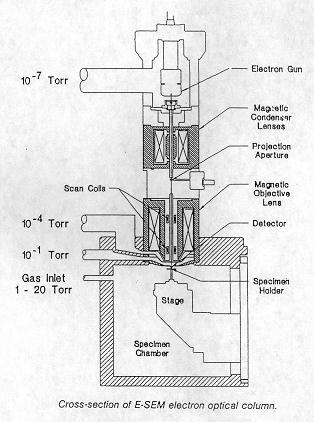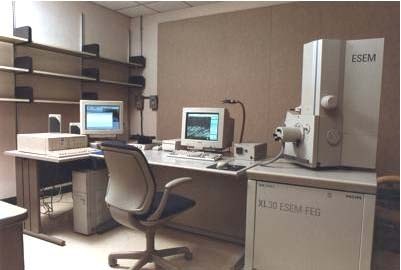The development of the ESEM has filled the longtime desire of scientists to view specimens and processes in their natural state.
The ESEM allows the examination of specimens surrounded by a gaseous environment. This means that a specimen viewed in the microscope does not need to be conductive and therefore does not need to be coated with a conductive material. Even liquids can be viewed in the microscope.
How the ESEM works
 |
The primary electron beam hits the specimen which causes the specimen to emit secondary electrons. The electrons are attracted to the positively charged detector electrode. As they travel through the gaseous environment, collisions occur between an electron and a gas particle results in emission of more electrons and ionization of the gas molecules. This increase in the amount of electrons effectively amplifies the original secondary electron signal. The positively charged gas ions are attracted to the negatively biased specimen and offset charging effects. |
As the number of secondary electrons varies the aplification effect of the gas varies. If a large number of electrons are emitted from a position on the specimen during a scan, there is a high signal. If only a small amount of electrons are emitted the signal is less intense. The difference in signal intensity from different locations on the specimen allows an image to be formed.
